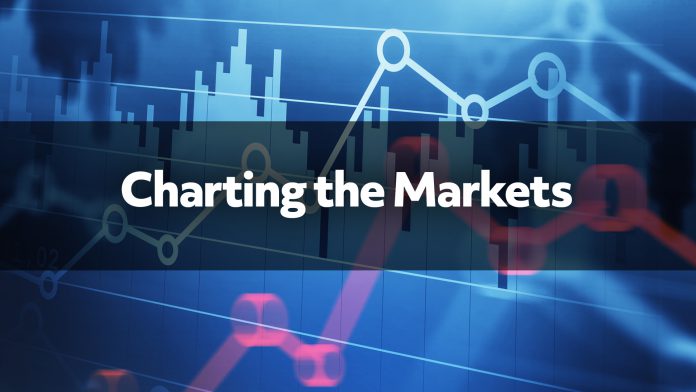Individuals beginning in the stock market soon encounter the world of technical analysis. Terms like “support,” “resistance” and “trends” are all over the news and Internet. You could spend a lifetime reading them and still be confused, so in this series we’ll get you started with technical analysis.
Technical Analysis Tries to Anticipate Future Moves
Technical analysts examine price action and volume action in hope of predicting future movement. They rely primarily upon charts of individual securities but also assess the collective performance of entire indexes or sectors.
While past performance is no guarantee of future results, technical analysis still believes what happened yesterday may help us anticipate what could take place tomorrow. Like everything else in trading, the goal isn’t certainty but seeking to tilt the odds in our favor.

Technical Analysis Studies Price Action
Technical analysis studies the price history of a stock or exchange-traded fund (ETF). That includes opening prices, high prices, low prices and closing prices. These values match time frames, days. But you can also look at shorter periods like hours, or longer times like weeks and months.
Because they’re interested in the full range of movement, technical analysts often use candlestick charts or bar charts. Both show a lot more information than simple line charts. Another post will explore those.
Volume is another important part of price. How many shares does it trade in each period? This can be help assess the importance of various moves. Technical analysts often pay a lot of attention to volume.
They don’t however look at company-financials like earnings, revenue or debt. Those issues belong to the realm of fundamental analysis — a completely different skill than technical analysis.
Technical Analysis Has a Long History
You might think technical analysis is new because it relies heavily on computers and mountains of data. But did you know it’s actually older than fundamental analysis, which started with Benjamin Graham in the 1930s?

Munehisa Homma was one of the earliest known market technicians. The 18th-century Japanese rice merchant not only created candlesticks charts. He also wrote a book about market psychology and rotations between bullish and bearish sentiment. He called them “yin” and “yang.”
Charles Dow is perhaps the most important technical analyst. He pioneered stock-market indexes, explained trends and established the concept of confirmation. Dow also founded The Wall Street Journal and Dow Jones. We’ll have an entire post about him soon.
Technical Analysis Uses Different Time Frames
Technical analysts use different intervals on charts because the stock market operates over different time frames.
Weekly charts help identify longer-term trends. Investors looking for stocks moving higher over a period of months or years will use this time frame.
Daily charts are the most common and matter to both short-term players and longer-term holders. They’re especially useful for swing traders targeting a move of a few weeks.
Intraday charts can use intervals of a few hours, all the way down to minutes and seconds. These are most heavily used by day traders, who enter and exit positions in the same session. Day traders never hold anything overnight.
Using the wrong time frame with one’s trading style is a common mistake in technical analysis. Investors should always know their time horizons and accept risk accordingly. It’s all part of having a disciplined trading system with clear rules.
Technical Analysis Can Help You Trade Better
After all, the whole point of technical analysis is to help you trade better. That means tilting the odds in your favor. Technical analysis does this in a few ways.

First, it helps you recognize trends in the market. Stocks and sectors often follow paths higher or lower month after month, quarter after quarter. Spotting those patterns are a big step toward consistent profits.
Second, technical analysis can help you identify important chart levels. There are often specific prices where large amounts of supply and demand may exist. Knowing them can help you enter and exit trades more effectively.
Third, technical analysis can help you anticipate reversals. After all, a trend is only useful as long as it lasts. Is sentiment too giddy? Has a move run its course? Are there historical parallels? Keep reading our Charting the Markets series for answers to all these questions and more.
Technical Analysis Is Part of Active Management
Finally, remember the goal of technical analysis: outperforming the market. Anyone can simply buy an index fund and make money when everything’s going up. That’s passive management.
Technical analysis, on the other hand, is active management. Some active managers use intensive fundamental analysis or research. But technical analysts use price action to position themselves for gains over various time frames.
Like any other trading strategy, it only works when individuals follow it. If you’re going to enter positions based on charts then you need to also respect them when they give you signal to back out. Discipline and risk management still need to be the top priorities.























